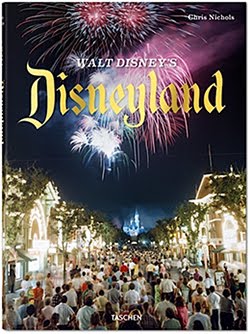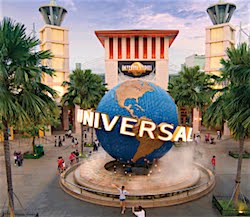of the sketches from the patent titled "Roller coaster with articulable seat backs" :
"By leaning the seat backs from vertical to an obtuse angle, a completely new ride experience can he achieved in a roller coaster even using an existing or a traditional rollercoaster track... In the load/unload position, the seat back is in a "normal" position such as substantially vertical (e.g., 90 to 110 degrees or the like from horizontal), which allows passengers to load and unload the vehicle comfortably either in the station or during an evacuation. In the ride position, though, the seat back would be leaned or rotated backwards (e.g., away from the "front" of the vehicle and its direction of travel (DOT)) to a more horizontal position such as to an obtuse angle of 120 to 180 degrees as measured from horizontal...
In the ride position, the passenger's sightlines and point of view (POV) are substantially blocked in the vehicle's DOT, and the passenger can no longer see what is coming as the vehicle moves through the ride portions of the track or see when the track is going to turn or drop/rise. Such unexpected moves of the vehicle increase the thrill, excitement, and unpredictability of the ride experience. The passenger's POV is largely directed upward (in contrast to a passenger seated in a conventional upright/vertical position) such that parts of a roller coaster ride that would not be seen by a conventional seat arrangement are easily observed. The thrill, excitement, and unpredictability of the experience are significantly increased as objects cross quickly in and out of the passenger's field of view. For example, overhead rockwork may open into expansive caverns in a mountain-themed ride and then quickly return to close-in rockwork. This serves to enhance the sense of speed and excitement as the riders are unaware of what lies ahead along the track...."
"A roller coaster was tested by the inventors that included a passenger seat with a seat back positioned in a reclined or "horizontal" position. This test, on an old and existing coaster, showed that the experience provided was fun, unique, and substantially different than that provide by a vertical seat back on the exact same track. A number of experiential, operational, and marketing benefits have been identified by the inventors for this type of roller coaster ride. The ride provides an articulated seat that allows for easy and familiar load/unload of the vehicle in the station or during evacuation, as well as delivering a new and unique ride experience to the passengers. The experience is more disorienting and thrilling because the passenger does not know where he is or what is going to happen next. There are no fixed visualization points, and this even proved true for attraction-operator passengers that know the ride extremely well (e.g., their comments were along the vein of "feels like I'm riding this coaster for the first time again"). Not being able to see the track or upcoming path through the sets prevents the passenger from preparing themselves and/or expecting what is coming next.
The articulable seat coasters heighten the sense of speed especially in low roof or tunnel areas of the ride. This allows for slower coasters and shorter tracks to be used while still delivering on demands for high levels of rider thrill. The coasters provide passengers with new and interesting view points of the show and ride environment. Test passengers commented on seeing things in the old and existing coaster attraction that they had never seen before even though they had ridden the original coaster many, many times. The passenger POV and perspective on the ride set/environment (or "show") was new and exciting and set pieces/structure may appear larger from the reclined perspective. The lift hill feels like a vertical lift since the combination of vehicle body/frame tilt and seat back horizontal position tilts the passenger even farther back, and this was found by the passengers to be fun and interesting. The roller coaster provides fun transitions between tight tunnels and low ceiling portions to portions of the track in which the nearby structure is more wide open and may have higher ceiling rooms or be outdoors. Overhangs or "bridges" were very surprising, exciting, and/or frightening to the test coaster passengers as they could not see them approaching, and twists, turns, and drops had a heightened sense of thrill since the rider was unprepared for the dynamic experience."
You can read the full description on the patent page HERE and i have to say that this new invention could make the coaster ride more comfortable as your center of gravity will be lower. Of course, the remaining question is: on what kind of ride will WDI use this invention? Any ideas?
Pictures and Patent text: copyright Disney Enterprises











































